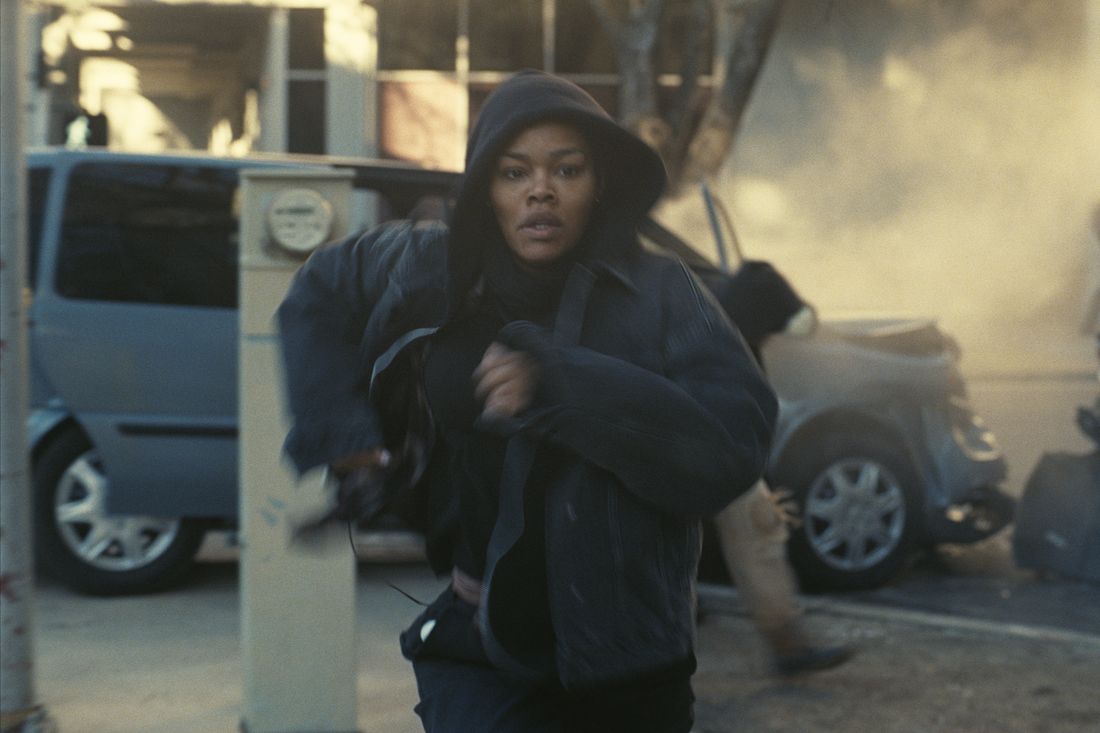
The film *One Battle After Another* establishes one clear detail about the passage of time: sixteen years elapse between its energetic opening and the rest of the story. Though activist Perfidia Beverly Hills (Teyana Taylor) notes that “not much has changed” after this jump, the world experienced by her former partner, Bob (Leonardo DiCaprio), and their daughter, Willa (Chase Infiniti), feels subtly altered. Details like the song “Mo Bamba” and the use of nonbinary pronouns hint at a shifting culture, leaving the film’s exact timeframe—whether 2018, 2025, or even 2040—ambiguous.
Ever since *One Battle After Another* came out, people have been debating when it actually takes place! It’s tricky because the way the French 75 acts – all rebellious and underground – feels like something out of the 1960s counterculture. But the very beginning, where Perfidia meets Bob, they fall in love, she gets arrested, escapes, and has Willa before vanishing, *isn’t* set that far back. I mean, you clearly see smartphones when Perfidia’s arrested! The movie’s loosely based on Thomas Pynchon’s *Vineland*, which connects the 60s radicals to the 80s yuppies, but *One Battle* isn’t set in the 80s either. It’s a real puzzle!
The film opens with a scene of the French 75 rescuing migrants at the border, a practice that, while happening now, also occurred during Obama’s presidency in 2014. This detail creates a timeline puzzle: if the opening takes place then, Bob’s time with Willa in Baktan Cross would be in 2030. However, their meeting could have happened later – perhaps during Biden’s term or even up to the film’s release in September 2025, shifting the main events of the film to 2041. Most viewers seem to believe this later timeframe, pointing to details like the futuristic-yet-retro technology used by Steven Lockjaw. But just when you think you’ve figured out the timeline, the film throws in conflicting details, like the classic cars featured throughout. Bob drives a 1991 Nissan Sentra, and the characters avoid smartphones to prevent tracking. These details enrich the characters – like Willa’s friend owning a discontinued Toyota Yaris – but don’t necessarily create a consistent world. It seems the director prioritized character development over a strictly coherent timeline, choosing these details to enhance the characters, not necessarily to build a believable universe.
Watching *One Battle After Another* brought to mind Christian Petzold’s *Transit*, a film that cleverly plays with time. Though the characters in *Transit* appear to be living during World War II, the setting around them—the cars, appliances, and even weapons—is completely modern. It’s unclear if this is intentional, perhaps suggesting the characters are ghosts, or simply a way to save money on a period piece. Whatever the reason, it elevates the film beyond a typical WWII story, making it more intriguing. *One Battle After Another* has a similar effect; the more the timeline feels uncertain, the more captivating the film becomes. The French 75 cannon could realistically exist in the present, the past, or the future. Ultimately, Anderson’s film leaves you with the hopeful message that revolutionaries will always emerge. No matter the era, location, or technology, there will always be someone ready to fight for change.
Read More
- Clash Royale codes (November 2025)
- Stephen King’s Four Past Midnight Could Be His Next Great Horror Anthology
- LSETH PREDICTION. LSETH cryptocurrency
- Zerowake GATES : BL RPG Tier List (November 2025)
- Where Winds Meet: March of the Dead Walkthrough
- McDonald’s releases fried chicken bucket and Upside Down Burger in Stranger Things collab
- Where Winds Meet: Best Controller Settings
- It: Welcome to Derry’s Big Reveal Officially Changes Pennywise’s Powers
- Best Assassin build in Solo Leveling Arise Overdrive
- Man goes viral spotting himself in advert he never took part in
2025-10-08 23:54